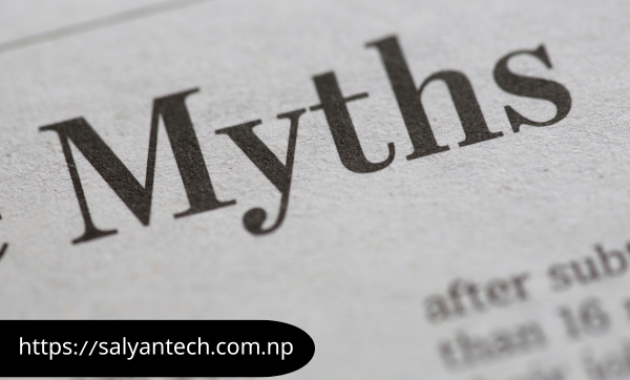Insurance can be a confusing topic, with many myths and misconceptions surrounding it. These myths can lead to people making poor decisions about their coverage, which could leave them unprotected when they need it most. In this article, we’ll debunk five common insurance myths and provide you with accurate information to help you make informed choices about your insurance needs.
Myth 1: “I Don’t Need Life Insurance If I’m Young and Healthy”
The Reality
Many young, healthy individuals believe that life insurance is only necessary for older adults or those with health issues. However, life insurance is important for everyone, regardless of age or health status.
- Lower Premiums: When you’re young and healthy, life insurance premiums are generally lower. Locking in a policy at a young age can save you money in the long run.
- Unexpected Events: Accidents or sudden illnesses can happen at any age. Having life insurance ensures that your loved ones are financially protected if something happens to you.
- Future Planning: Life insurance can be part of your long-term financial planning. It can help cover debts, support your family, or even contribute to your retirement savings.
Myth 2: “Red Cars Cost More to Insure”
The Reality
The color of your car has no impact on your insurance premiums. This myth likely stems from the idea that red cars are more associated with speed and risk-taking, but insurance companies don’t take color into account when determining rates.
- What Actually Matters: Factors like the make and model of the car, its safety features, the cost to repair or replace it, and your driving history are what influence your insurance premiums.
- Driving Record: A clean driving record can lower your rates, regardless of the color of your car.
- Car Usage: How often you drive and where you park your car can also affect your insurance costs.
Myth 3: “My Home Insurance Covers All Types of Natural Disasters”
The Reality
Many homeowners believe that their standard home insurance policy covers all types of natural disasters, but this isn’t always the case. Standard policies typically cover damage from events like fires, windstorms, and hail, but not all natural disasters are included.
- Floods and Earthquakes: These are two of the most common natural disasters that are usually not covered by standard home insurance policies. You need separate policies for flood insurance and earthquake insurance.
- Check Your Policy: It’s important to read your policy carefully and understand what is and isn’t covered. If you live in an area prone to certain natural disasters, consider purchasing additional coverage.
- Consider Extra Coverage: Depending on where you live, you may need to add riders or separate policies for risks not covered by your standard home insurance.
Myth 4: “The Minimum Auto Insurance Required by Law Is Enough Coverage”
The Reality
While it’s true that you need to meet your state’s minimum auto insurance requirements, relying solely on minimum coverage can be risky. Minimum coverage usually only includes liability insurance, which covers damages you cause to others, but it may not be enough to cover all potential costs after an accident.
- Liability Limits: Minimum liability limits are often too low to cover the full cost of damages or injuries in a serious accident. If the costs exceed your coverage, you could be held personally responsible for the difference.
- No Coverage for Your Car: Minimum insurance usually doesn’t cover damage to your own car or theft. Comprehensive and collision coverage can protect your vehicle in these situations.
- Consider More Coverage: It’s wise to consider higher liability limits and additional coverage options to fully protect yourself financially.
Myth 5: “I Don’t Need Renters Insurance Because My Landlord’s Policy Covers Me”
The Reality
Many renters mistakenly believe that their landlord’s insurance policy covers their personal belongings. In reality, a landlord’s policy typically only covers the building structure, not the tenant’s personal property.
- Protecting Your Belongings: Renters insurance protects your personal belongings in case of theft, fire, or other covered events. Without it, you would have to pay out of pocket to replace your items.
- Liability Protection: Renters insurance also provides liability coverage if someone is injured in your rental unit or if you accidentally damage someone else’s property.
- Affordable Coverage: Renters insurance is usually affordable, with most policies costing just a few dollars a month. It’s a small investment that can save you a lot of money and stress in case of an emergency.
Conclusion
Understanding the truth behind these common insurance myths can help you make better decisions about your coverage. Life insurance is important, no matter your age or health; car color doesn’t affect insurance rates; not all natural disasters are covered by standard home insurance; minimum auto insurance may not be enough; and renters should always consider getting their own insurance. By debunking these myths, you can ensure that you’re adequately protected and avoid any unpleasant surprises in the future. Remember, it’s always a good idea to review your insurance policies regularly and consult with an insurance professional to make sure you have the right coverage for your needs.
Read Also: 7 Types of Insurance You Should Conside
